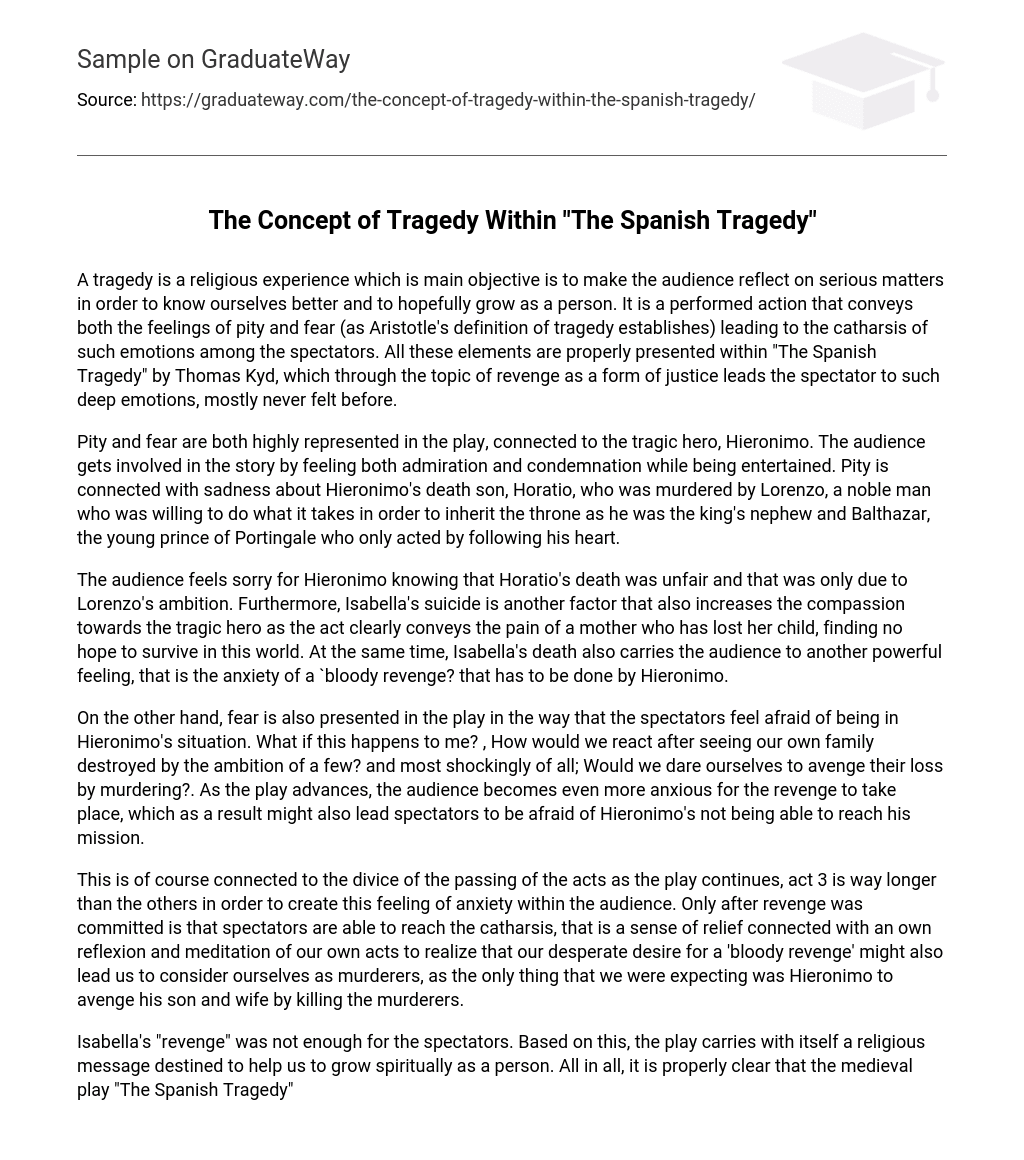A tragedy is a religious experience which is main objective is to make the audience reflect on serious matters in order to know ourselves better and to hopefully grow as a person. It is a performed action that conveys both the feelings of pity and fear (as Aristotle’s definition of tragedy establishes) leading to the catharsis of such emotions among the spectators. All these elements are properly presented within “The Spanish Tragedy” by Thomas Kyd, which through the topic of revenge as a form of justice leads the spectator to such deep emotions, mostly never felt before.
Pity and fear are both highly represented in the play, connected to the tragic hero, Hieronimo. The audience gets involved in the story by feeling both admiration and condemnation while being entertained. Pity is connected with sadness about Hieronimo’s death son, Horatio, who was murdered by Lorenzo, a noble man who was willing to do what it takes in order to inherit the throne as he was the king’s nephew and Balthazar, the young prince of Portingale who only acted by following his heart.
The audience feels sorry for Hieronimo knowing that Horatio’s death was unfair and that was only due to Lorenzo’s ambition. Furthermore, Isabella’s suicide is another factor that also increases the compassion towards the tragic hero as the act clearly conveys the pain of a mother who has lost her child, finding no hope to survive in this world. At the same time, Isabella’s death also carries the audience to another powerful feeling, that is the anxiety of a `bloody revenge? that has to be done by Hieronimo.
On the other hand, fear is also presented in the play in the way that the spectators feel afraid of being in Hieronimo’s situation. What if this happens to me? , How would we react after seeing our own family destroyed by the ambition of a few? and most shockingly of all; Would we dare ourselves to avenge their loss by murdering?. As the play advances, the audience becomes even more anxious for the revenge to take place, which as a result might also lead spectators to be afraid of Hieronimo’s not being able to reach his mission.
This is of course connected to the divice of the passing of the acts as the play continues, act 3 is way longer than the others in order to create this feeling of anxiety within the audience. Only after revenge was committed is that spectators are able to reach the catharsis, that is a sense of relief connected with an own reflexion and meditation of our own acts to realize that our desperate desire for a ‘bloody revenge’ might also lead us to consider ourselves as murderers, as the only thing that we were expecting was Hieronimo to avenge his son and wife by killing the murderers.
Isabella’s “revenge” was not enough for the spectators. Based on this, the play carries with itself a religious message destined to help us to grow spiritually as a person. All in all, it is properly clear that the medieval play “The Spanish Tragedy” contains the key elements that creates a tragedy as if, mainly through pity and fear to realize and find new aspects of our own personality while being entertained and to hopefully learn the lesson behind the play.





